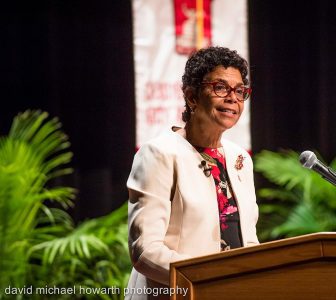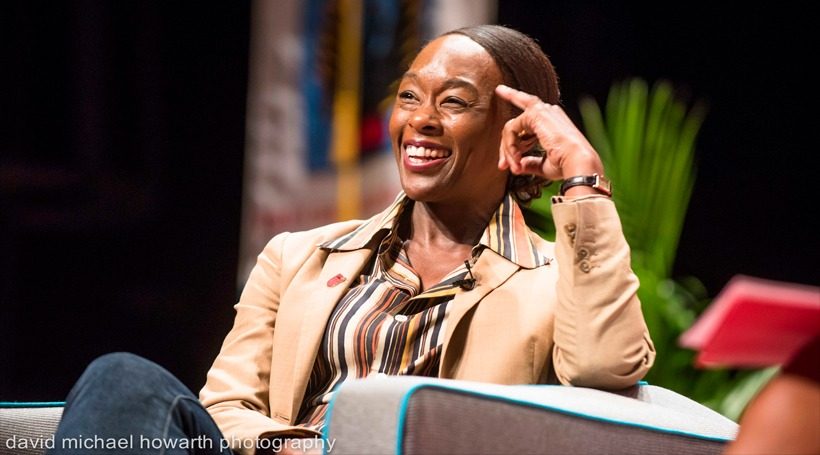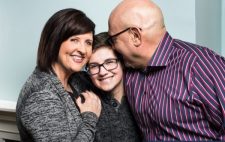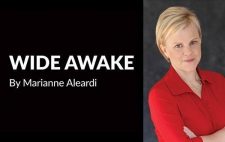Margot Lee Shetterly never knew she was in on a secret.
“When I heard the words black, female and scientist, I didn’t think that had to apply to three different people,” Shetterly says. “I didn’t think that couldn’t be just one person with all of those adjectives.”
With her father working as a scientist in Virginia’s NASA Langley Laboratory, Shetterly had a front-row seat to the lives of mathematicians and researchers who were both African-American and female. Once she realized this wasn’t the norm across the country – specifically, when her husband pointed out that fact – she felt compelled to do something.
Shetterly began uncovering these women’s stories in December 2010. Six years later, she emerged from piles of notes and archives with “Hidden Figures” – the book and the movie.
“It was like an archeological dig. Just looking for absolutely any scrap or snippet of these women, of their lives, of their work, of the people that worked with them on what they were collaborating on, of the community at the time,” she says.
“Hidden Figures”, Shetterly’s novel chronicling the lives of African-American women working at NASA during the 20th century, was released in September 2016.
The story of these women caught on quickly, and the book was assigned as required reading in many South Jersey schools. As the designated 2017 Rutgers Reads book, it was read by the university’s entire incoming freshman class and in September, Shetterly visited the Camden campus for a special lecture.
The first-time author shared her journey of uncovering these women’s stories – from the first interview to the movie premiere and beyond. She even explained the title’s origins to the room of eager listeners: “Hidden Figures” wasn’t Shetterly’s first idea, but when it popped into her head, it was clear how perfectly it fit.
“It was kind of like this two-word, haiku poem for the book,” she says. “For me, it expressed in this very succinct way everything that I wanted to say about this story and everything that intrigued me about this kind of history that captured my imagination.”
The book release was followed quickly by the December debut of “Hidden Figures” the blockbuster movie. Shetterly gives credit for the film’s quick turnaround to Donna Gigliotti, who has produced a number of hits, including “Silver Linings Playbook” and “Shakespeare in Love.”
“There was no book when she said, ‘We’re going to make a movie out of this ‘Hidden Figures’ story,’” Shetterly says. “She optioned my book proposal. It was a pretty gutsy move for somebody to option a non-existent book from an unpublished author.”
The two projects grew side by side, with chapter writing and screenwriting happening simultaneously. While Shetterly was kept in the loop on the movie’s progress as a consultant and executive producer, she didn’t have final say on the script or production – and was perfectly happy with that.
“I learned that there is no way to turn a book into a movie without making changes,” she says. “And that was something I had a really hard time with at the beginning. I thought, ‘Well, my book goes from 1943 to 1969, so the movie should too,’ which would not have been a good idea – they made a very good decision by not listening to me.”
In the end, Gigliotti’s leap of faith paid off. Besides a $22.8 million opening weekend and Best Picture nomination, Shetterly experienced her own special moments of fulfillment at movie screenings across the country.
“I have seen this movie with moviegoers of every conceivable age, gender, race, ethnicity, class, professional background and political persuasion,” Shetterly says, “and the reactions in the theater – the laughing and crying and cheering – have been the same with every single group.”
But one screening – the first, in fact – stands out in her mind. Shetterly saw the final cut of Hidden Figures for the first time in New York, one day after astronaut John Glenn (a central character in the film, portrayed by Glen Powell) passed away.
“It was bittersweet to have seen him come back safely from space in the movie and to know that he had died,” she says. “It gave it a real poignancy, and it was a wonderful send-off and tribute to his life and his legacy.”
From screening to screening, viewers have showered Shetterly with thank yous and their own “hidden figure” stories. The most common thing she hears, however, is one question.
“The first question people ask is, ‘Why haven’t I heard this story before?’” Shetterly says. “Why didn’t we turn Dorothy Vaughn and Mary Jackson and Katherine Johnson and Christine Darden and all of these other women into professional role models and use them to pull generations of young people, particularly young women, into science careers?”
Shetterly has struggled to find the answer to that question since she began her research. A large part of it, she says, is the fact that women’s accomplishments were largely ignored at the time, as men in charge took credit for much – if not all – of the work.
“Perhaps the real reason why these figures have been hidden for so long has to do with who lives, who dies, who tells your story,” she says. “It’s a pretty big story they’ve been hiding in plain sight for so many years.”
During her research, Shetterly quickly discovered countless more women hiding in plain sight, like the female mathematicians working in Pennsylvania’s Bell Labs and the female astronomers working at Harvard Astronomical Laboratory.
“Over the course of this last year, ‘hidden figures’ has come to refer to somebody who has contributed something to our society that we feel is worthy of recognition, but for any variety of reasons, they’ve remained in the shadows,” says Shetterly.
Shetterly now contributes to changing that image. And as she enters what she calls “Hidden Figures’ second chapter” on a nationwide book tour, she emphasizes the biggest lesson she has learned from her experience: the importance of storytelling.
“What writing ‘Hidden Figures’ showed me was the power that comes from knowing history and from being able to tell a story,” she says. “The only way to make an American story a true story is for all of us to believe that telling stories falls not to the politicians or the powerful or the people at the top, but to each and every one of us.”

A Familiar Face
As you flip through the pages of “Hidden Figures,” you’ll find countless names of women who helped NASA in the race to space – but one, in particular, has special meaning at Rutgers University-Camden.
Ida Bassette was a native of Hampton, Virginia and worked alongside Dorothy Vaughan (portrayed by Octavia Spencer in the movie adaptation) as a “computer” in the West Campus of NASA Langley. She later became a shift supervisor along with Vaughan and eventually made the move with her family to Passaic, New Jersey. There, she became a public school teacher and raised a daughter who went on to become the current Chancellor of Rutgers University-Camden: Phoebe Haddon.














